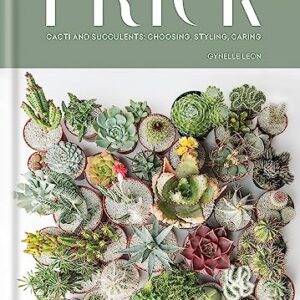We’ve all been there – you come home after a long day of work, ready to unwind and relax, only to remember that you forgot to water your plants. As you rush to give them a much-needed drink, you can’t help but feel guilty for neglecting them. But fear not, because establishing a consistent watering routine is easier than you think and can help your plants thrive.
Plants, like us, need water to survive. Without a consistent watering schedule, they can become stressed, wilted, or even die. So how can you prevent your leafy friends from going thirsty? Here are some tips to help you establish a watering routine that works for both you and your plants.
First and foremost, it’s important to understand the specific needs of your plants. Different types of plants require different amounts of water, depending on factors such as their size, growth stage, and environment. Some plants, like succulents, prefer to be watered sparingly, while others, like ferns, thrive in moist soil. By researching the watering needs of your plants, you can better tailor your routine to meet their individual requirements.
Next, consider the time of day that you water your plants. Watering in the morning is generally recommended, as it allows the plants to absorb the water before the heat of the day evaporates it. This also helps prevent the risk of mold or mildew forming on the leaves. However, if morning watering isn’t feasible for you, watering in the evening is also a good option. Just be sure to avoid watering your plants in the afternoon when the sun is at its hottest, as this can cause the water to evaporate quickly and potentially harm the plants.
Another important aspect of establishing a consistent watering routine is to pay attention to the signs that your plants give you. Wilting, yellowing leaves, and dry soil are all indicators that your plants are in need of water. By regularly checking on your plants and monitoring their health, you can better determine when they need to be watered. Additionally, consider investing in a moisture meter or using the finger test to check the soil’s moisture levels.
Now, let’s talk about the method of watering. Different plants prefer different watering techniques, so it’s important to consider how you water your plants. For many houseplants, using a watering can with a narrow spout is ideal, as it allows you to target the water directly at the base of the plant without getting the leaves wet. Alternatively, you can also try bottom watering, where you place the plant pot in a tray of water and allow the soil to soak up the water from the bottom. This method can be especially beneficial for plants with sensitive leaves or those prone to fungal diseases.
In addition to watering, it’s important to consider other factors that can affect your plants’ hydration levels. Proper drainage is essential to prevent water from pooling at the bottom of the pot, which can lead to root rot. Make sure your plant pots have drainage holes and use a saucer or tray to catch excess water. Also, consider the humidity levels in your home, as plants in drier environments may require more frequent watering.
Lastly, consistency is key when it comes to establishing a watering routine. Set a regular schedule for watering your plants, whether it’s once a week or every few days, and stick to it. Use reminders or alarms on your phone to help you stay on track. Consistency not only benefits your plants but also helps you form a healthy habit of caring for them regularly.
In conclusion, don’t let your plants go thirsty – establish a consistent watering routine to help them thrive. By understanding your plants’ watering needs, paying attention to signs of dehydration, using the right watering methods, and staying consistent, you can ensure that your leafy friends are happy and healthy. So grab your watering can, set a schedule, and show your plants some love – they’ll thank you with beautiful, vibrant growth.






